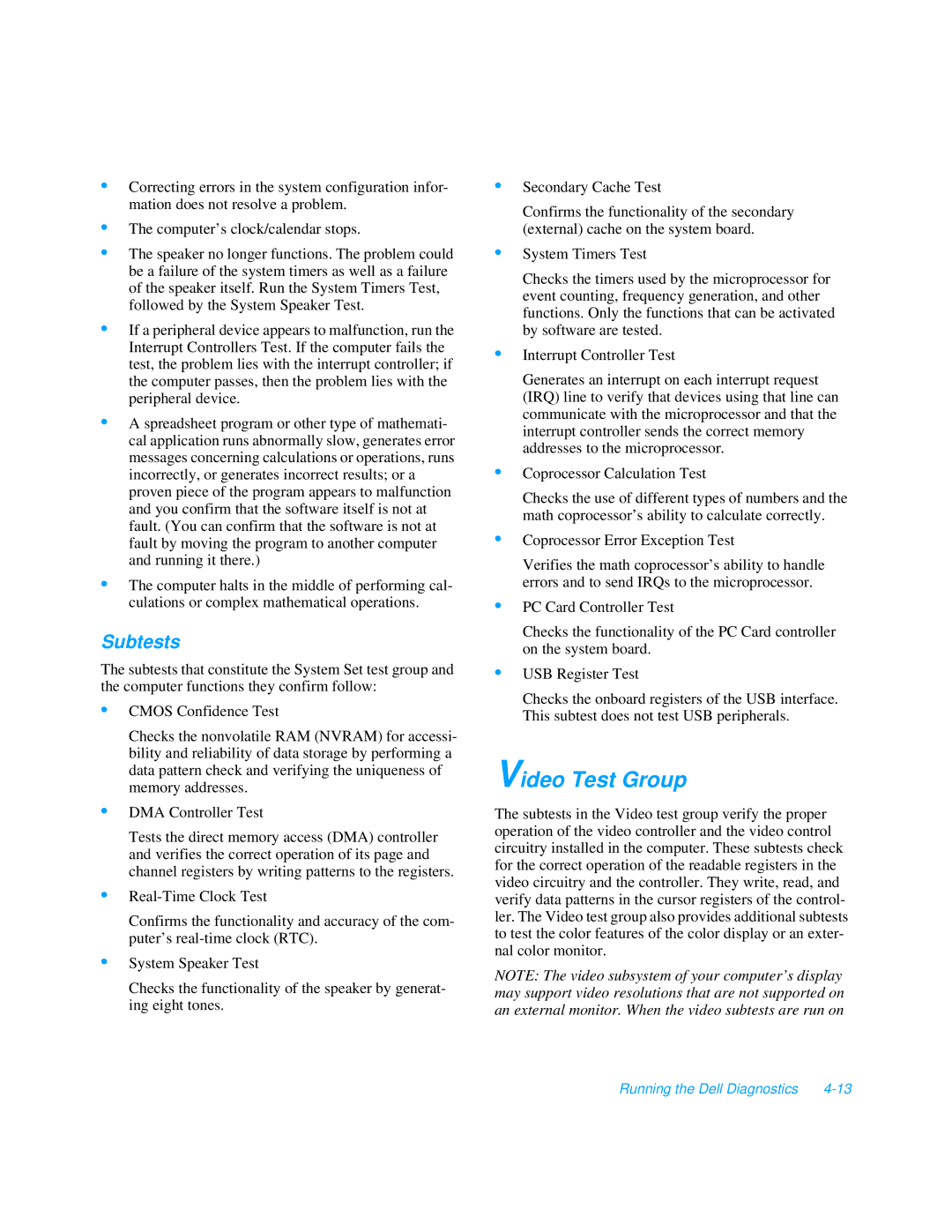•Correcting errors in the system configuration infor- mation does not resolve a problem.
•The computer’s clock/calendar stops.
•The speaker no longer functions. The problem could be a failure of the system timers as well as a failure of the speaker itself. Run the System Timers Test, followed by the System Speaker Test.
•If a peripheral device appears to malfunction, run the Interrupt Controllers Test. If the computer fails the test, the problem lies with the interrupt controller; if the computer passes, then the problem lies with the peripheral device.
•A spreadsheet program or other type of mathemati- cal application runs abnormally slow, generates error messages concerning calculations or operations, runs incorrectly, or generates incorrect results; or a proven piece of the program appears to malfunction and you confirm that the software itself is not at fault. (You can confirm that the software is not at fault by moving the program to another computer and running it there.)
•The computer halts in the middle of performing cal- culations or complex mathematical operations.
Subtests
The subtests that constitute the System Set test group and the computer functions they confirm follow:
•CMOS Confidence Test
Checks the nonvolatile RAM (NVRAM) for accessi- bility and reliability of data storage by performing a data pattern check and verifying the uniqueness of memory addresses.
•DMA Controller Test
Tests the direct memory access (DMA) controller and verifies the correct operation of its page and channel registers by writing patterns to the registers.
•
Confirms the functionality and accuracy of the com- puter’s
•System Speaker Test
Checks the functionality of the speaker by generat- ing eight tones.
•Secondary Cache Test
Confirms the functionality of the secondary (external) cache on the system board.
•System Timers Test
Checks the timers used by the microprocessor for event counting, frequency generation, and other functions. Only the functions that can be activated by software are tested.
•Interrupt Controller Test
Generates an interrupt on each interrupt request (IRQ) line to verify that devices using that line can communicate with the microprocessor and that the interrupt controller sends the correct memory addresses to the microprocessor.
•Coprocessor Calculation Test
Checks the use of different types of numbers and the math coprocessor’s ability to calculate correctly.
•Coprocessor Error Exception Test
Verifies the math coprocessor’s ability to handle errors and to send IRQs to the microprocessor.
•PC Card Controller Test
Checks the functionality of the PC Card controller on the system board.
•USB Register Test
Checks the onboard registers of the USB interface. This subtest does not test USB peripherals.
Video Test Group
The subtests in the Video test group verify the proper operation of the video controller and the video control circuitry installed in the computer. These subtests check for the correct operation of the readable registers in the video circuitry and the controller. They write, read, and verify data patterns in the cursor registers of the control- ler. The Video test group also provides additional subtests to test the color features of the color display or an exter- nal color monitor.
NOTE: The video subsystem of your computer’s display may support video resolutions that are not supported on an external monitor. When the video subtests are run on
Running the Dell Diagnostics |
